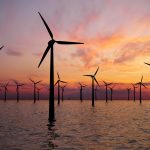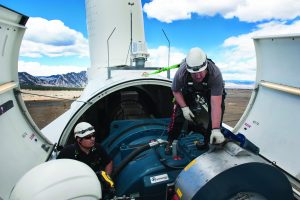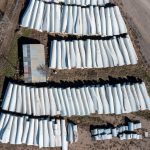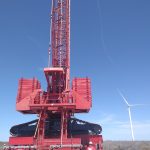Recent regulatory developments continue to further the trend of increased participation by wind energy generators in the forward energy markets. This trend potentially places wind energy generators at greater risk of economic curtailment, which can result in lower investment returns and decreased project development.
On June 21, 2012, the Federal Energy Regulatory Commission (“FERC”) approved a new rule intended to help improve the integration of wind and other renewable energy generation into the transmission grid (http://htl.li/dNV66). When it takes effect next summer (twelve months after publication in the Federal Register), the new rule will require transmission providers to offer wind and other renewable energy generators the option to schedule transmission service in intervals of fifteen minutes or less, rather than the current hourly intervals originally designed for fossil-fuel and nuclear generation, in order to lessen their exposure to imbalance charges attributable to the intermittency of their wind or other renewable generation resources.
The rule will also require new renewable generators to provide meteorological and forced outage data for their facilities to their transmission service providers, to help the transmission providers manage the flow of renewable energy onto their systems with improved power production forecasting. FERC declined, however, to adopt a proposed component of the new rule, a standard for transmission providers to provide renewable energy generators with generation balancing services, which use capacity reserves to offset the frequent changes renewable generators’ output. In adopting the new rule, FERC observed that “over time, implementation of intra-hour scheduling . . . will allow public utility transmission providers to rely more on planned scheduling and dispatch procedures, and less on reserves, to maintain overall [transmission] system balance.”
Implementation of the new rule may increase the trend toward grid operators requiring, or at least permitting, wind energy generators (and possibly other renewable energy generators) to participate in forward energy markets in which the grid operator schedules and dispatches generation on the basis of bids submitted to supply energy, with the lowest bidders taking precedence. If participation in forward markets increases, wind generators will likely become more exposed to economic dispatch and the resulting risk of “economic curtailment” of their output.
What is economic curtailment? It is curtailment of a wind generator’s output due to market price (and not operational) reasons. Let’s assume the typical case of a wind generator that has entered (or will enter) into a power purchase agreement (“PPA”) with a load-serving utility that obligates the utility to purchase all of the wind generation facility’s output. Economic curtailment of that facility’s output may occur in energy markets whose rules allow the transmission-system operator to:
• Administer a forward market for energy (such as a day-ahead market);
• Use locational marginal prices for energy in the forward market as price signals reflecting electricity supply and demand at multiple locations on the transmission system; and
• Use the forward market and market-determined prices to schedule and dispatch generation facilities, on the basis of the lowest prices to supply energy bid into the forward market.
If the market rules require (or permit) wind generators to participate in such a forward market, the PPA buyer typically acts as the scheduling coordinator for the generator’s output in the forward market. In this capacity, it must (or may choose to) bid a minimum price at which the PPA buyer/scheduling coordinator is willing to sell the wind generator’s output into the forward market at a particular location in a given hour. If other generators bid lower prices than the scheduling coordinator for a sufficient quantity of output to serve the load at that location and hour, the system operator would schedule and dispatch the output of those other generators, rather than the output of the wind facility – that is economic curtailment of the wind generator.
Economic dispatch of wind generation is a fairly recent phenomenon, one the parties to the PPA may not have foreseen and thus failed to address whether and how the seller would be compensated for the resulting decrease in its revenues and possible tax benefits and renewable energy credits. More recent PPAs with provisions that expressly permit economic curtailment by buyers (sometimes with limited compensation to sellers) make it potentially difficult for investors and lenders to forecast the impact of economic curtailment on returns for proposed projects. At a time when wind energy is facing various challenges, the prospect of increased economic curtailment has become another material factor to consider for future project development.



































